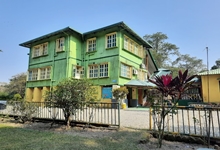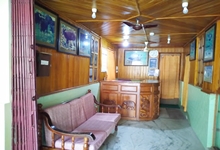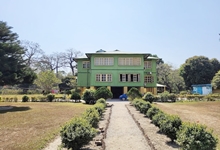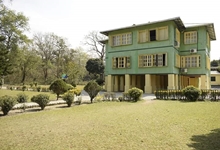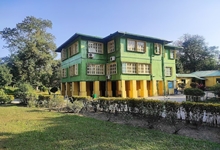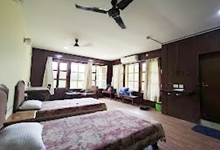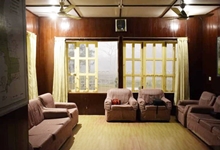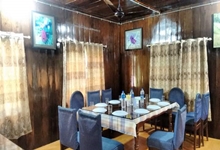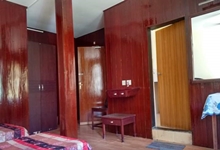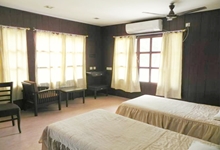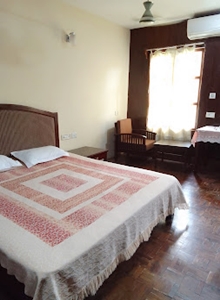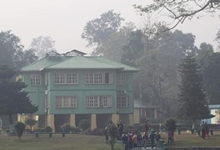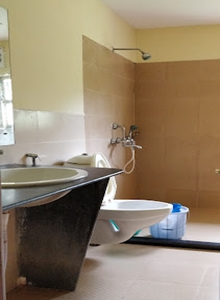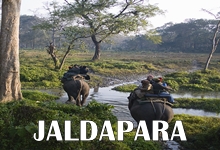
JALDAPARA
Jaldapara National Park (formerly known as Jaldapara Wildlife Sanctuary) is a national park and a also a preserved wildlife sanctuary set at the foothills of the Eastern Himalayas in Alipurduar sub division of Alipurduar district in the Indian state of West Bengal. Settled on the banks of River Torsha, Jaldapara National Park is a safe haven for the famous One – Horned Rhinoceros after Kaziranga National Park in Assam. Jaldapara was constituted as a wildlife sanctuary in the year 1941 for the protection of wildlife especially the ‘Single One Horned Rhinos’. Jaldapara mainly constitutes a mosaic of woods, grasslands, perennial streams, sandy river banks and extensive belts of tall grasses. Jaldapara contains a great diversity of flora and fauna of mixed deciduous forest, grasslands and river banks along with savannah grasslands of tall elephant grasses. The Malangi River also flows nearby Jaldapara from east to west. Jaldapara is drained by rivers namely Torsa, Malangi, Hollong, Chirakhawa, Kalijhora, Sissamara, Bhaluka and Buri Torsa. Jaldapara also provides extensive grassland which is the last refuge to a wide variety of mammals, amphibians, reptiles and birds those inhabit the forest area. Jaldapara Wildlife Sanctuary was stated as a national park in the year 2012. Jaldapara National Park is spread from the Bhutan border near Totopara in the North to the Mathurabagan tea estate in the South. National Highway 31 (NH31) passes through the northern side of Jaldapara National Park. Madarihat is the outer edge town of Jaldapara National Park and most of the hotels and resorts including that of West Bengal Tourism Department Corporation Ltd Tourist Lodge are settled here.
Quick facts about Jaldapara National Park:
Area: 216 sq. km
Altitude: 61 meter
Best Season: October to May (particularly March and April, when new grass is growing)
Clothing: Summer – Cotton, winter – Woolen
Language: Bengali, Hindi, Nepali and English
Activities and attractions around Jaldapara:
- Bird watching: Jaldapara National Park and its surrounding area is a paradise for bird watchers. Jaldapara is among the very few places in India where the Bengal Florican is sighted. Tourists visiting Jaldapara National Park can opt to set out with a binocular to witness the majestic flight of Indian Hornbill, Racket – Tailed Drongo and Asian Paradise Flycatcher. Apart from that Jaldapara National Park is exceptionally rich is avifauna because of its varied terrains, thick natural vegetation and rich insect life. More than 240 species of birds inhabit Jaldapara National Park those are commonly found in variety of habitats including grasslands, water bodies and woodlands. Bird species like Green Pigeons, Hornbills, Barbets, Parakeets, Woodpeckers, Cuckoos, Orioles, Drongos, Babblers and Thrushes are commonly found. Wetland birds like Large Cormorant, Little Cormorant, Indian Shag, Darter, Egret, Pied Wagtail, River Lapwing, Moorhen, White Breasted Waterhen, etc. are also found. Birds of prey include Crested Serpent Eagle, Pallas’s Fishing Eagle, Pied Harrier, Common Buzzard, Kestrel, Sparrow Hawk, etc. is also spotted in Jaldapara National Park. Nocturnal birds like Owls and Nightjars are also spotted. Other birds found at Jaldapara are Doves, Bee – Eaters, Rollers, Hoopoe, Shrikes, Larks, Hill Mynas, Bulbuls, Finches, Black partridge, Shaheen Falcon, Great Pied Hornbills, Forest Eagle Owl, Large Green Billed Malkoha, White Rumped Vulture, Lesser Adjutant Stork are among the endangered species.
- Wildlife sightings: Wildlife sightings are among the major activities while at Jaldapara. There are two different ways to explore the exquisite beauty of the vast grassland of Jaldapara. A thrilling Elephant ride is the best possible way to explore the sanctuary. But to mention as seats of Elephant ride remains limited hence the second best possible way is the Jeep safari. Jaldapara National Park is a mainly known for habitat of Indian One Horned Rhinos/ Asiatic One Horned Rhinos and Asiatic Elephant. Apart from this Jaldapara is home to different species of wild animals like Royal Bengal Tigers, Elephants, Deer, Sambar Deer, Barking Deer, Spotted Deer, Hog Deer, Wild Hog, Bison, Indian Leopard and others. Apart from these Jaldapara is also home to wide species of reptiles to name but a few are Python, Monitor Lizard, Krate, Cobra, Gecko and about 8 species of Fresh Water Turtles.
- Totopara: Totopara is a small village in Madarihat – Birpara CD Block of Alipurduar. Totopara is known to be the only habitation of the ‘Toto’ a primitive tribe in Dooars region. Totopara is located around 22 km away from Madarihat, the entrance to Jaldapara National Park and 30 km away from Jaldapara National Park. Totopara is bounded by Bhutan hills to the north, River Torsha to the east and River Hauri and Titi Reserve Forest on the south – west separated by Hauri River. The aboriginal lifestyle of the Toto tribe attracts a large number of tourists from all around the globe.
- Chilapata Forest: From Jaldapara tourists can opt for a visit to Chilapata Forest in a day visit located at a distance of 22 km away. Chilapata Forest was once the hunting ground of the Coch dynasty and the remains of old fort Nal dynasty known as ‘Nalrajar Garh’ which is present deep inside the forest attracts wide number of tourists. Inside Chilapata a special species of tree is found named as ‘Ramguwa Tree’ and its special characteristics is that on cutting any branch of this tree a red coloured fluid comes out. Apart from that Chilapata Forest is also covered with lush greenery and is also home to wide species of wild animals.
- South Khayerbari Nature Park and Animal Rescue Centre: South Khayerbari Nature Park is an animal rescue centre and rehabilitation centre for Leopards and Tigers and is located on the banks of Buri Torsha River. South Khayerbari Animal Rescue Centre is located around 15 km away from Jaldapara National Park. Inside South Khayerbari tourists can opt for a Leopard Safari by car.
- Kunja Nagar Eco Park: Kunja Nagar is a scenic and tranquil village located around 07 km from Falakata and 17 km from Jaldapara National Park. Kunja Nagar is spread over an area of about 4500 hectare area and is a newly found tourist spot of Alipurduar district inaugurated in the year 1998. Kunja Nagar Eco Tourism Park is the largest natural tourist under Torsha Cantonment area. Here River Torsha forms a natural border between Kunja Nagar Eco Tourism Park and Jaldapara National Park. There is a watch tower at Kunja Nagar that offers panoramic view of the surrounding landscape along with River Torsha.
- Gorumara National Park: Located at a distance of 80 km away from Jaldapara and is one of the popular national parks of India in the North Bengal region of West Bengal. Located within Mal Bazaar sub division, Gorumara National Park is situated on the flood plains of two important rivers namely River Murti and River Raidak. Gorumara National Park is also an important habitat of wide species of wild life including mammals, amphibians, reptiles, birds and wide floral species are also found.
- Murti: Murti is another important tourist spot of Dooars region located around 92 km away from Jaldapara National Park. Murti or Moorti village has developed as a picturesque tourist spot and is a great place for nature and wildlife enthusiasts. The continuous stretch of River Murti divides Chapramari Wildlife Sanctuary and Gorumara National Park.
- Buxa: Buxa Tiger Reserve is a tiger reserve and a national park situated at the north eastern corner of Dooars of northern region of West Bengal bordering Bhutan and Assam. Buxa is another point of tourist interest located at a distance of 48 km away from Jaldapara National Park. Throughout the year numerous tourists visits Buxa during their visit to Jaldapara. Buxa is mainly known for Buxa Fort, vivid landscapes and abundance in flora, fauna and avifauna.
- Jayanti: Another most popular tourist destination of the Dooars is Jayanti lies on the banks of Jayanti River in the sub division of Alipurduar district. Located at a distance of 52 km away from Jaldapara, the region of Jayanti is characterized by undulating mountain valleys, flowing rivers, mountain caves (known as Mahakal) featuring stalactite and stalagmite natural structures, large forested land of dense forest, rural population and above all the view of Bhutan hills at the backdrop.
- Bhutan Ghat: Bhutan Ghat is a picturesque village in Alipurduar district located at a distance of 85 km away from Jaldapara National Park via NH 317. Bhutan Ghat is mainly known for its scenic landscapes, pristine evergreen forest cover, rolling tea gardens, mountainous terrain along with River Ridak flowing through.
How to reach:
By Flight: Bagdogra Airport is the nearest airport to reach Jaldapara National Park located around 145 km away. Bagdogra Airport is well connected by regular flight service with Kolkata, Guwahati and Delhi. From Bagdogra Airport via Siliguri tourist will get hired vehicles to reach Jaldapara.
By Train: Jaldapara National Park is well connected with some of the popular railway stations of North Bengal. The nearest rail head to Jaldapara is Hashimara railway station located at a distance of 09 km away. The second nearest rail head to Jaldapara is at Falakata railway station located at a distance of 24 km away. The third nearest rail head to Jaldapara is at Alipurduar Junction located at a distance of 48 km away. The fourth nearest rail head to Jaldapara is New Mal Junction located at a distance of 74 km away. And the fifth nearest railway station to Jaldapara is New Jalpaiguri railway station located at a distance of 120 km away. Among the entire above mentioned railway stations New Jalpaiguri railway station is mostly connected by strong railway networks with all the major cities of India. Hashimara and New Mal Junction are well connected by Kanchankanya Express from Kolkata. From all these railway stations tourists will get vehicles on hire to reach Jaldapara National Park.
By Road: Jaldapara National Park is easily accessed by road as Jaldapara is well connected by National Highway 31 (NH31) with Siliguri and can be reached within 03 hours by vehicles. North Bengal State Transport buses and private buses are available those connects from Siliguri to Alipurduar via Madarihat. Private vehicles also ply from the nearby railway stations to reach Jaldapara. Madarihat (the entry point of Jaldapara) is located on NH31 (Siliguri – Hashimara road), which is 140 km east of Siliguri, 80 km west of Alipurduar and 80 km north of Coochbehar. Jaldapara can also be reach from Cochbehar at a distance of 60 km and Jalpaiguri at a distance of 78 km by good motor-able road.
Best time to visit:
The best season to visit Jaldapara National Park is the winter and the onset of winter (October to April). During this time the temperature remains comfortable and is apt for the jungle safari, elephant ride and local sightseeing. Apart from that Jaldapara is also visited during May, but due to the rising temperature, it becomes less comfortable for maximum tourist’s movements. During monsoon Jaldapara National Park remains closed (June 15th to September 15th) along with that most of the resorts/ hotels receive very less tourists in the monsoon season.
Elephant Safari and Jeep Safari in Jaldapara National Park:
- One of the most prime activities in Jaldapara National Park is the Elephant ride inside the forest. The Elephant Ride at Jaldapara is conducted from the Elephant Ride Point near Hollong Bungalow. In each ride only 04 persons are permitted to board an Elephant Ride. This Elephant Ride in Jaldapara is mainly conducted in shifts in the morning (each consists of 01 hour ride only). Tourists are informed that tickets permitted for Elephant Ride at Jaldapara is based on first come first served basis. Elephant Ride is conducted at Jaldapra from 06.00 am to 07.00 am and from 07.00 am to 08.00 am.
- After Elephant Safari the second most attractive activity is the Jeep Safari inside Jaldapara National Park. The Jeep Safari is conducted from WBTDCL Aranya Tourism Property at Madarihat. Jeep Safari is conducted at Jaldapara three times a day, from 05.30 am to 07.00 am, 07.00 am to 08.30 am and 03.30 pm to 05.00 pm. For tourists those will not get the permit for both Elephant Ride and Jeep Safari for they will get the permit for Day visit which is conducted from the main gate of Jaldapara National Park to Hollong Tourist Lodge from 10.00 am to 02.00 pm.
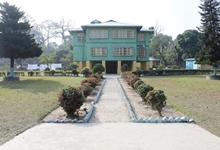
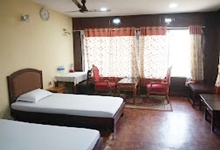
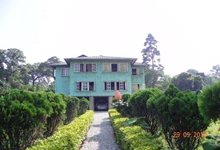

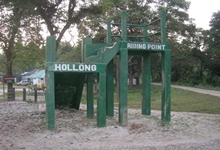
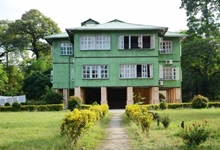
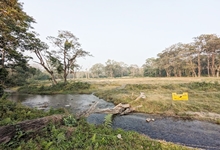
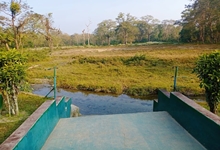
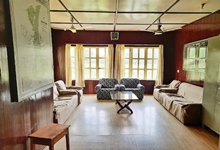
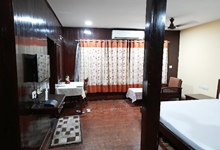
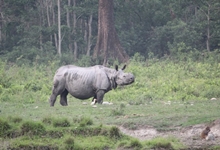
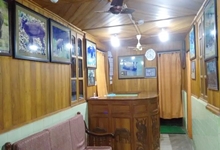
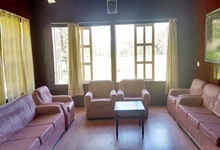

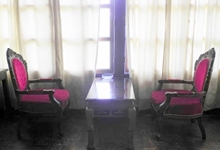
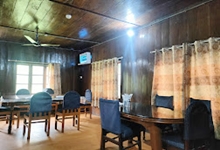
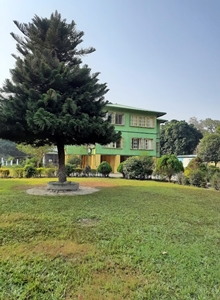
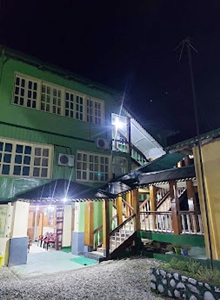

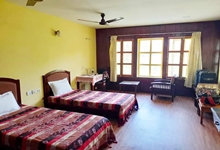


WBTDCL – HOLLONG TOURIST LODGE OR HOLLONG BUNGALOW
Hollong Tourist Lodge (also Hollong Bungalow) is the most preferred and the most demanding accommodation option for tourists, nature lovers and wildlife enthusiasts of the entire Dooars region. Hollong Tourist Lodge or Hollong Bungalow is set amidst dense wilderness and lush greenery of Jaldapara National Park and tourists staying at Hollong Tourist Lodge or Hollong Bungalow are lucky enough as they can spot frequent visits of wild animals like Rhinos, Leopards, Gaur or Peacock within the bungalow periphery. Hollong Tourist Lodge or Hollong Bungalow has 08 rooms among which 03 rooms are kept reserved for VIPs and other government officials and the remaining 05 rooms are opened for general visitor and tourists visiting Jaldapara National Park. Hollong Tourist Lodge or Hollong Bungalow is maintained by West Bengal Tourism Development Corporation Ltd (WBTDCL) with clean spacious rooms and the property of Hollong Tourist Lodge or Hollong Bungalow is fully wooden constructed. But getting a booking at Hollong Tourist Lodge or Hollong Bungalow is nothing less than a miracle in itself as the property remains packed most of the time. The booking of WBTDCL opens at midnight 12.00 am and as soon as by 12.05 am all the bookings of Hollong Tourist Lodge or Hollong Bungalow gets filled up. In order to reach Hollong Tourist Lodge or Hollong Bungalow tourists and visitors need to hire a car upto Madarihat (the entry gate of Jaldapara National Park) and there one need to present their photo identity proofs along with their booking ids in order to get the permission to enter the core area of the forest. From Madarihat entry gate at a distance of 07 to 08 km inside the forest is Hollong Tourist Lodge or Hollong Bungalow. From Hollong Tourist Lodge or Hollong Bungalow around 200 meters in the forest there is a salt pit which is maintained by the forest officials and wild animals are very often spotted near this salt pit in order to eat salt. Hollong Tourist Lodge or Hollong Bungalow is separated from this salt pit by a narrow stream of River Hollong as on the other side of the river is the dense forest of Jaldapara with long sized elephant grasslands and riverine forests. Apart from the side of the salt pit the remaining three side of Hollong Tourist Lodge or Hollong Bungalow is guarded by electric fencing and after the sunset tourists are not allowed to step out of the periphery of Hollong Tourist Lodge or Hollong Bungalow. The serenity and thrill of Hollong Tourist Lodge or Hollong Bungalow is a lifetime experience worth remembering. But the journey from Madarihat upto Hollong Tourist Lodge or Hollong Bungalow is sort of mini safari in itself, as one can spot sudden sightings of wild animals like elephant, rhinos, gaur, sambar deer, barking deer or even wild deer gazing at the tourists.
Elephant Safari from Hollong Tourist Lodge:
Elephant Safari is the most demanding and the most awaited experience among tourists visiting Jaldapara National Park and Hollong Tourist Lodge or Hollong Bungalow is renowned for elephant safari. Though elephant safaris are booked through online platform but it starts from Hollong Tourist Lodge or Hollong Bungalow. During this elephant safari tourists are taken deep inside the forest across the narrow streams in order to spot various wild animals in their natural habitat. But while staying at Hollong Tourist Lodge or Hollong Bungalow one can easily spot wild animals roaming nearby.
Amenities available:
- Quiet spacious rooms (fully wooden furnished).
- Attached spacious washroom (with western toilets).
- Spacious dining area.
- Guides available (chargeable).
- Rooms are equipped with wide open windows.
- Powerful search lights installed by forest department to spot wild animals during the night.
Booking at Hollong Tourist Lodge or Hollong Bungalow:
Booking of Hollong Tourist Lodge or Hollong Bungalow remains in demand throughout the year except from June 15th to September 15th (when the forest remains closed). To book room(s) at Hollong Tourist Lodge or Hollong Bungalow tourists need to do it in advance 30 days prior from the scheduled date of journey. The booking window of Hollong Tourist Lodge or Hollong Bungalow open at mid night 12.00 am and closes at 12.05 am. Tourists are also informed that once booked room(s) at Hollong Tourist Lodge or Hollong Bungalow, the booking will be treated as non-cancellation or non-refundable. Rooms are allotted on first come first served basis.
Tariff:
INR @ 4000/- per room per day basis (for rooms only)
GST or taxes (if any) are as applicable, payable at spot.
Other charges as levied the forest official or WBTDCL are as applicable, payable at spot.
Meals cost is also payable at spot.
Things to know:
- Tourists need to carry all the required things along with them.
- As Hollong Tourist Lodge or Hollong Bungalow is set in the core area, hence tourists are not allowed to litter, or play loud music, roam around in the evening or night.
- Tourists should follow all the instructions as directed by the forest officials.
- After check out tourists are only allowed to sit in the reception area only for 30 minutes.
HOW TO BOOK: Call us at 9831311606 , 9830381306, to get the current availability status or use the query form furnished below with all you travel queries and submit, we will call/ contact you directly.
Or, you may also directly book from our Kolkata office at: 8C Shanti Ghosh Street, Kolkata – 700003. Nearest Landmark: Manindra Chandra College and Shyambazar Metro Railway Station (Gate No: 3).
